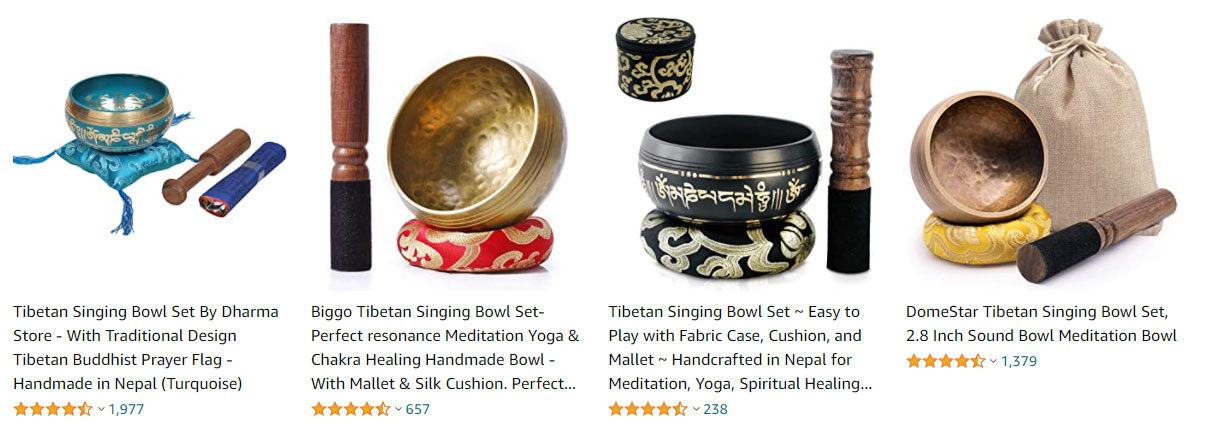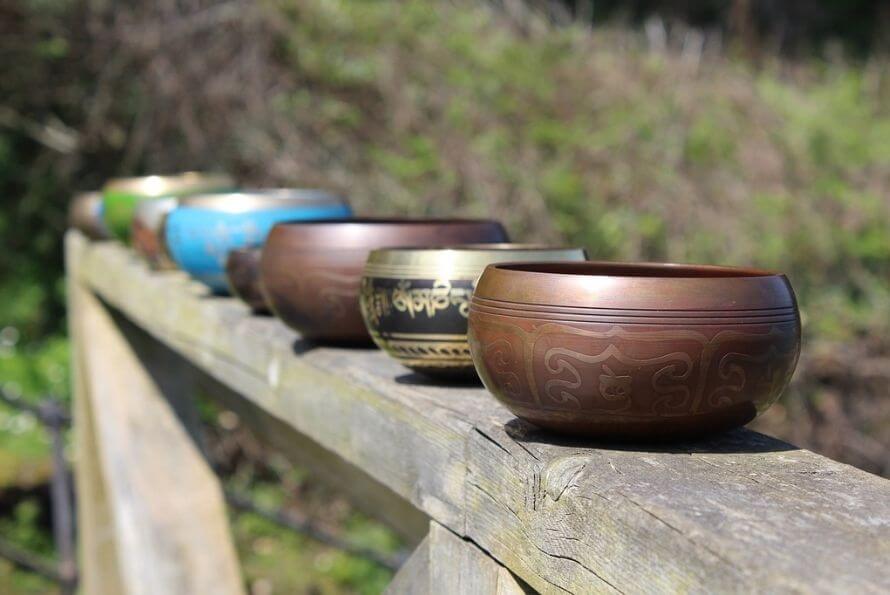How to choose a singing bowl
Tibetan singing bowls bring a Zen musical touch to your life. The sounds and vibrations they release, can support you in all kinds of spiritual activities (meditation, yoga, music therapy, vibrotherapy, Tibetan bowl massage...).
The bowls come in different shapes and sizes, which can make the choice difficult. We will help you choose the right Tibetan singing bowl for you, including a mallet and a cushion!
What is a Singing bowl?
Maybe you have heard them in a yoga class accompanied by incense or you know them from therapeutic healing massages with singing bowls.
Singing bowls or Tibetan bowls are a special form of inverted bell without a flapper that resounds through a wooden mallet most often.
Origin of the singing bowl
Originally used as a traditional instrument by the Mahayana and Tantric Buddhist schools during rituals.
They are mainly found in the Himalayan regions (Tibet, Nepal, Bhutan, Ladakh...) and in northern India, but their use is widespread in many regions of Buddhist influence. The best known users are Tibetan monks.
It is a Zen musical instrument that brings serenity, vital energy, purification and letting go of the body and mind. Used in therapy, meditation and yoga. Its benefits are similar to those of a gong, cymbals, kalimba or tongue drum.
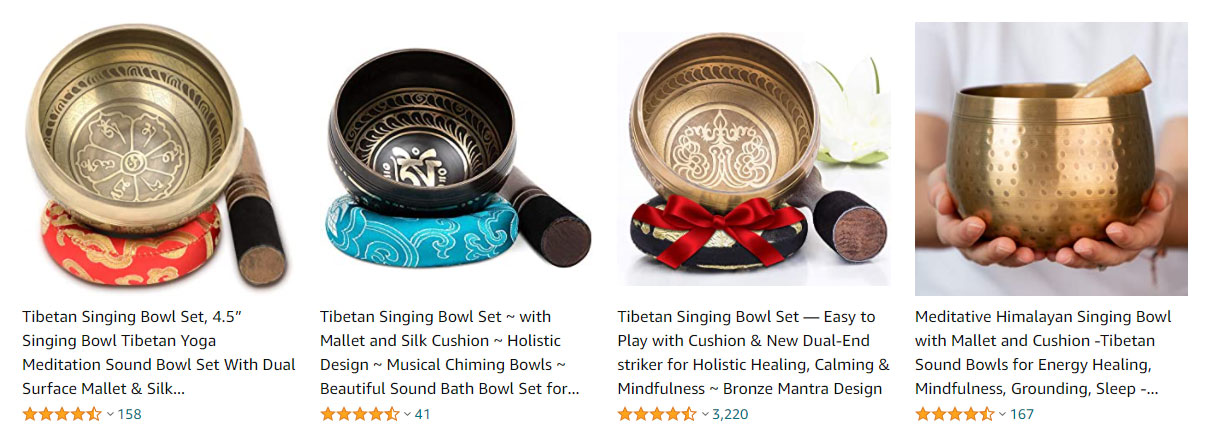
Singing bowl benefits
Just as with a musical instrument that can go out of tune after use, our body can also go out of tune with this "vibrational harmony" and eventually develop a disease. Stress and negativity create blockages that can disrupt a healthy flow of energy in the body.
This will first appear in the energy field around our body in the form of small energy disturbances, which can then develop into illness in our physical body.
Sound, vibration and frequencies can be used to "retune" us to health and one of the most powerful modalities for this is the use of a therapeutic singing bowl.
Once you are a fan of relaxing vibrations, you often want to buy one yourself. But how do you choose a Tibetan bowl? Big, small, thick, thin, handmade or not?
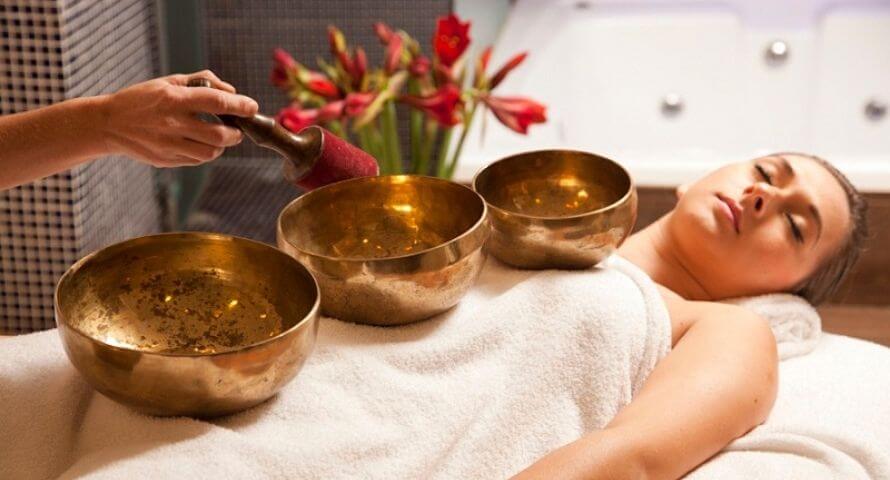
Determine for what purpose you wish to use the singing bowl
Before looking at the different types of bowls available, it is useful to have a clear objective. Do you want to use it as an alarm clock during meditations or do you prefer to create a soothing sound bath?
Lower sounds are often used in relaxation sessions, while higher sounds would give energy. This is why there are also special chakra bowls designed to have an effect on energy.
It is also important to know whether you should be able to move the bowl or not. Practical bowls are easy to take to a yoga class or a concert, while gigantic bowls may need a special place. So where and when you play is a consideration!
Types of singing bowls and materials
When you're looking for a Zen musical instrument, you can choose from hand hammered, machined and crystal singing bowls.
Singing bowls hammered by hand:
These classic Tibetan singing bowls are the most popular. They are based on instruments that have been used for centuries on religious occasions in the Buddhist Himalayas. Often made of 7 metals, symbolizing the 7 chakras. You will also find these authentic singing bowls in China and Japan. The hand hammered bowls are made of an alloy of seven precious metals. This gives each scale a unique sound that contains many different tones. Some users swear by a hand-hammered singing bowl because it sounds hotter than a machine.
Machine-made singing bowls
:
Machine bowls are often made of brass or aluminum. They are almost identical to handmade bowls, except that the surface is more uniform, less handcrafted. The advantage of factory production is that you can adjust the scales to a certain frequency. This way, each scale sounds the same in principle and is harmonized. Chakra singing bowls, for example, are often machined to have exactly the right number of Hz of the intended chakra.
Crystal singing bowls:
The crystal singing bowls are made of quartz sand. This is heated and poured into special molds. The manufacturer then cuts the crystal in a special key. These bowls are heated by machine and made by hand! The tone of a crystal bowl often corresponds to the tone of one of the seven chakras.

The different sounds and vibrations
You only really know what such a tone looks like when you hit it. However, you can already deduce a lot from the size and thickness of a Tibetan bowl. It makes a difference!
The singing bowls are available in different sizes, from 10 cm in diameter to half a meter or more. You might think that the larger the size, the lower the sound. Indeed this is often true, a 12 cm bowl sounds higher than a 44 cm variant.
Be aware that two hand hammered bowls of the same diameter can still differ considerably in height. These are still handmade products, so they are never identical!
The thickness of the wall influences the development of sound after hitting the bowl. The degree to which a tone accumulates and persists is called the "response" of the singing bowl.
Thin-walled singing bowls generally respond faster than thick-walled bowls. This means that the sound of a thin shell accumulates and disappears more quickly. With a thicker wall, the sound is therefore less audible, but it also fades more slowly.
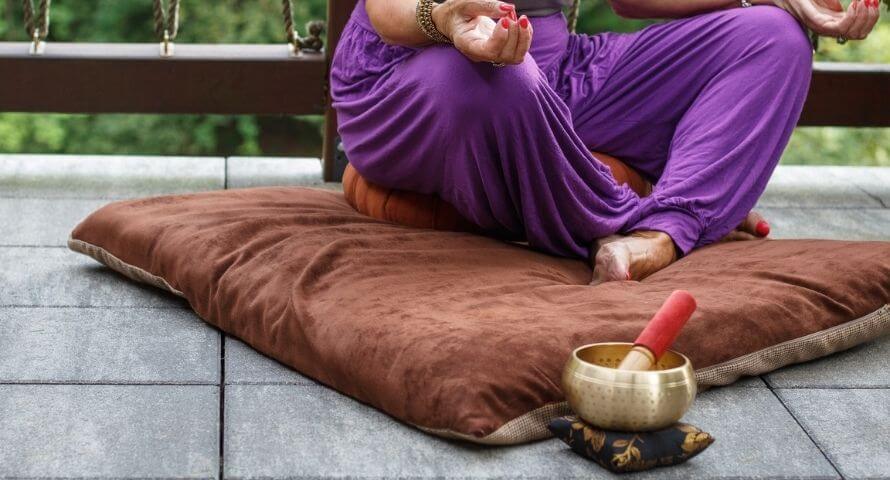
Importance of Spiritual Symbols
Tibetan singing bowls are usually decorated with important Buddhist symbols. Often reminiscent of Buddha or Buddhist mantras such as Om Mani Padme Hum.
There are also variants with spiritual symbols such as for example :
• Flower of Life,
• Tree of Life,
• Lotus Flower,
• Mantra
These decorations are not only beautiful, but according to the manufacturers also give extra meaning to the use. For example, the "Medicine Buddha" is intended for a healing effect and the singing bowl "Saraswati" stimulates your creativity. So read carefully and choose a chanting bowl with the effect you are looking for.
How to use a singing bowl?
There are two basic techniques for playing a singing bowl, namely tapping and stroking along the walls of the bowl.
The easiest way to get sound from your Tibetan bowl is to tap it with a wooden mallet. You hit the sounding bowl with another type of hammer and wait for the sound to disappear. This technique requires a minimum of practice and is easier to master.
One can also play its Tibetan singing bowl by rubbing the wood or leather of its mass on the edge. This technique takes you on a harmonious sound journey. Ideal for a relaxation session.
Care must be taken to ensure that the hammer remains in permanent contact with the metal of the singing bowl, that the pressure is constant and that the speed of movement is regular.
After a few moments, a vibration comes out of the bowl and begins to intensify as you rub the edge of the singing bowl.
A little more practice is needed to play the singing bowl with the caresses, but this practice creates a persistent and relaxing sound. This is called making a Tibetan bowl sing, hence the name "Singing Bowls".
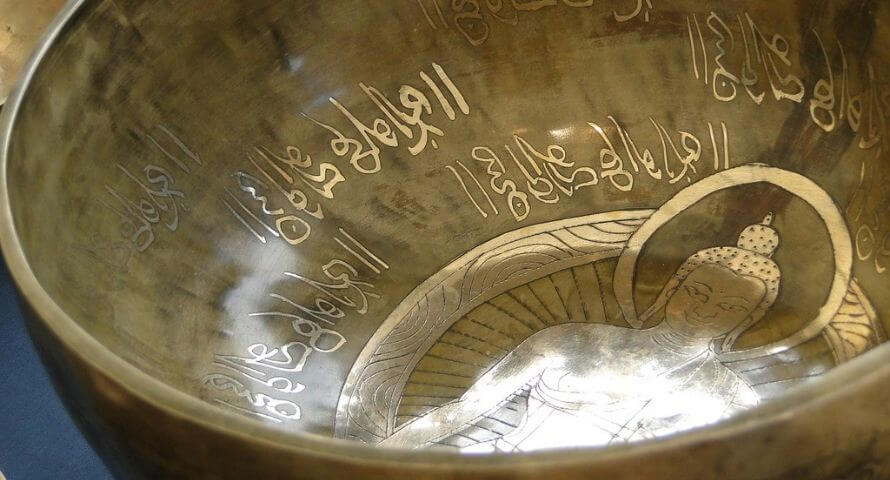
How to choose a Tibetan mallet and bowl cushion?
When you've found the perfect bowl, you're ready for accessories. You don't necessarily need a cushion to use it, you can also hold the bowl in your hand or use a mat you already have.
But a percussion instrument is of course indispensable! Try to strike a bowl with your hands, without a stick or mallet. If you want to be sure that your bowl, your cousin and your mallet match? Then choose a complete singing bowl pack.
Choosing a mallet for a Tibetan bowl
Most often the mallets, sticks or drummers of Tibetan singing bowls are made of wood or leather. Be sure to order a mallet of the correct size, at least as long as the diameter of your bowl. With a drummer that is too big or too small, you will not get the most out of your singing bowl.
Choosing a Tibetan bowl cushion
There are different cushions to place your bowl firmly. These are available in a square, ring or disc shape. For example, they have Buddhist embroideries or chakra symbols, but are also available in solid colors. Also pay attention to the size, a 10 cm cushion will not provide much support for a singing bowl half a meter in diameter.
Singing bowl / Tibetan bowl
After reading this article, you will know a little more about Tibetan bowls and how to choose them. There are a lot of them, we offer you a selection of our singing bowls to bring zenitude into your home. Another Zen musical instrument you might like is the kalimba.
